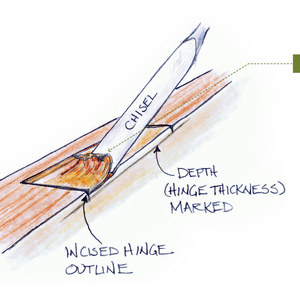It´s been a long time since I cut a hip roof and I was hoping someone could remind me whether you drop the seat-cut hieght on the hip or the valley board.
Discussion Forum
Discussion Forum
Up Next
Video Shorts
Featured Story

Listeners write in about shower panels and cordless tools and ask questions about old wiring, air leaks, and gutter covers.
Featured Video
SawStop's Portable Tablesaw is Bigger and Better Than BeforeHighlights
Fine Homebuilding Magazine
- Home Group
- Antique Trader
- Arts & Crafts Homes
- Bank Note Reporter
- Cabin Life
- Cuisine at Home
- Fine Gardening
- Fine Woodworking
- Green Building Advisor
- Garden Gate
- Horticulture
- Keep Craft Alive
- Log Home Living
- Military Trader/Vehicles
- Numismatic News
- Numismaster
- Old Cars Weekly
- Old House Journal
- Period Homes
- Popular Woodworking
- Script
- ShopNotes
- Sports Collectors Digest
- Threads
- Timber Home Living
- Traditional Building
- Woodsmith
- World Coin News
- Writer's Digest


















Replies
I believe what you are talking about is the heel, and on the hip you want the edge of the hip to be the same height as the commons where they break the outside of the top plate, and the center of the valley board should be the same heel height where it sits right at the 90 degree corner of the plates...so that would be dropping the seat cut i guess...reading this back to myself doesn't seem totally clear so not sure i helped or not, maybe some one more articulate will intercede.
You have to adjust the H.A.P. cut (Height above Plate) or HEEL cut in order to plane in with the top of the Common Rafter H.A.P. cut at the plate line. Or you can bevel the hip which you don't need to to.
You will see the reason why in my drawing that you have to drop the hip or adjust the hip to plane in.
Whe you mark the length of your hip you are marking it to the outside corner of the top plate. Since the hip is at 45°, if you mark your H.A.P. cut at the line of your hip length you will see that the line of the H.A.P. wil be 3/4" (1/2 thickness of hip) will not be sitting on the plate where it should be the same H.A.P. as the Common H.A.P. cut.
You will see that it creates a little Triangle, a Run and Rise. That rise would be the amount of the Hip Drop or if you didn't cut that H.A.P. cut from the right mark, that would be the amount that the hip would be sitting higher then then the Common H.A.P. cut therefot it wouldn't Plane in with the Common Rafter and there would be a hump at the corner where the hip sits.
Valleys you don't do anything, you mark the length and make the H.A.P. cut the same as the Common H.A.P. cut.
Joe Carola
I like Joe's way of figureing it out logically, but I'm gonna restate it anyway:
If you choose not to bevel the top of the hip rafter, the hip is dropped (deeper bridsmouth) a varrying amount depending on the roof slope (assuming 2X stock):
4:12 - 1/8"6:12 - 1/4"8:12 - 3/8"10:12 - 1/2"
The above is from the _Roof Framer's Bible_
BTW - I've never seen anyone bevel the top of hip rafter.
Matt
Edited 9/6/2003 10:19:27 AM ET by DIRISHINME